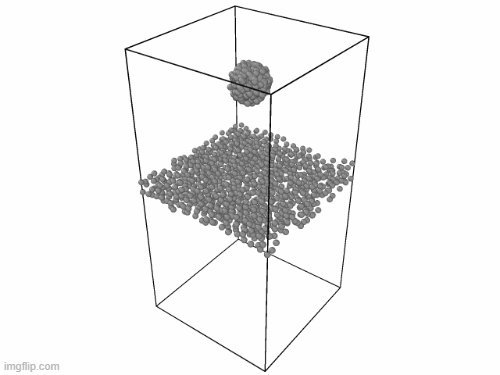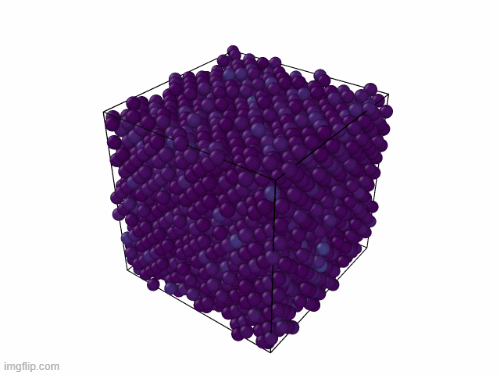Molecular Dynamics Research
Project Status: In Progress
Research Paper (coming soon)
Project Type: Research (under grant)
Research Timeframe: 1/2/2022 - Present
Summer grant timeframe: 6/7/2022 - 9/15/2022
Categories: Material by Design, statistical mechanics, computational dynamics, coding/simulation
Skills/Software used: packmol, LAMMPS, python, shell script, OVITO, VMD, statistical mechanics



Some cool molecular dynamic systems ran in LAMMPS
I became a part of the Northwestern Computational Nanodynamics lab led by Professor Sinan Keten in January of 2022. Since then I have been working on the material-by-design aspect of polymer grafted nanoparticles (PGNs)
Polymers and composites have proven to demonstrate incredible properties. For example, the high toughness and modulus of Kevlar allowed it to be used in a variety of industries, like military and aerospace. PGNs seek to improve upon previous breakthroughs in material science by combining polymers and ceramic or metallic particles.
Currently, my project focuses on using the potential of mean force (PMF) data found by Professor Keten's team in this paper to make binary-component-PGN-systems. This means constructing systems with 2 different types of PGNs (with different parameters) and running tensile deformation tests and seeing how the composition of the PGN types affect the properties.
This involves multiple steps: 1. Determine mixed interatomic potentials between different PGN types, 2. use packmol to solve an initial configuration, 3. use LAMMPS to generate and equilibrate the system, 4. use LAMMPS to conduct the tensile deformation test. This process is repeated for different compositions to find the optimal composition with the best tradeoff between toughness and modulus (finding the pareto frontier).
The range of different properties in binary PGN systems make them suitable for a wide range of applications. For a test system of N20 (polymer chain length of 20) and N100 (polymer chain length of 100) PGNs, we can see a variety of different properties dependent on the composition of the system (right). It is interesting to note that the tensile strength peaks at 30% N20 and 70% N100 polymers, demonstrating a non-linear relationship between composition and properties.
From impact-resistant jet engine fan cases to soft bio-robots, PGNs show great promise in being a versatile material that can replace older, less capable materials. Please check the GitHub page, research paper, and presentations at the top of the page as I will update them frequently.

Polymer Grafted Nanoparticles and superlattices


Mixed Interatomic Potentials I generated from PMF

Stress-strain curve for a test PGN system